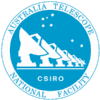Custom Query (104 matches)
Results (58 - 60 of 104)
| Ticket | Owner | Reporter | Resolution | Summary |
|---|---|---|---|---|
| #82 | fixed | Flow-on effects of including autocorrelations | ||
| Description |
If you Is this a bug or a feature? What changes should be made to miriad:
(eg we could add options=noauto) ?
|
|||
| #85 | fixed | Hit Fortran integer limit during imaging | ||
| Description |
HI Mark,
Wieringa to take a look. I did try to invert the data without using the double options and that worked, however, the cleaning task mosmem then fails to do any cleaning iterations - the miriad manual states that the double option needs to be used with mosaic data and may be this is why? Cheers, James On 22/06/2009, at 5:18 PM, Mark Calabretta wrote: Hi James, The segv arises from a very simple piece of code in mapper.for: c Zero the grid array. c
where ncount == 1, npnt == 357, nv == 2655, and nu == 1030 are passed in as subroutine arguments and Grd is defined as complex. The segv arises at the indicated line as soon as the loop is entered, i.e. i == j == pnt == k == 1. What appears to be happening is that the loop parameters, computed when the loop is entered, overflow the memory that may be addressed by a signed 4-byte integer: (2 * 4) * 357 * 2655 * 1030 = 7,810,160,400 versus 231 - 1 = 2,147,483,647. In other words, the problem size is too big for Fortran with its signed 32-bit integer array indexing (insert ascerbic comment re aips++ here). I note that removing 'double' from the invert options did reduce the problem to a managable size. I will have to pass you on to Mark Wieringa who has been working on extending Miriad for CABB data reduction. Regards, Mark On Thu 2009/06/18 13:29:50 +1000, James Urquhart wrote in a message to: Mark Calabretta <mcalabre@atnf.CSIRO.AU> Hi Mark, I've been reducing some recent CABB observations using miriad on kaputar but have run into a problem. The observations have been made at 3 and 6 cm and consist of a ~360 point mosaic. We have already reduced and imaged a number of similar observations using the hybrid arrays successfully excluding the 6th antenna. However, when we tried to image the latest observations using the 6 km array and this time including the 6th antenna we encounter a problem. The initial calibration of the flux, bandpass and phase sources is fine, however, when we try to invert the calibrated mosaic data the task fails to complete. If we exclude the 6th antenna we are able to invert it and produce an image, if we include the 6th antenna invert starts to create the beam file which gets to about 9 GBs and then fails to create the map file and we get a segmentation fault. If you want to look at the data you can find it on: /DATA/KAPUTAR_3/urq008/CABB/G305/REDUCED/6A/5500/NOANT6 and the calibrate mosaic file is 5500.pnt It looks like we are running into some sort of memory limit, is this the case, and if so is there anything we can do about it? Let me know if there are any other details you need. Cheers, James |
|||
| #87 | fixed | PRB report Jul 2009 | ||
| Description |
Update dashboard and submit by 2009-Jul-15 |
|||
